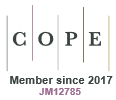A novel format for management of intravenous medication guidelines – a pharmacist-led guideline working group
Jeanie Misko A * , Emma Fox A , Tim Chang A and Matthew Rawlins
A * , Emma Fox A , Tim Chang A and Matthew Rawlins  A
A
A
Abstract
Intravenous medications are frequently used within hospital settings. To safely administer these medications to patients, further instructions are required on preparation and administration details. We describe a novel working group of hospital pharmacists (the Intravenous Medications Guidelines Working Group) formed with the aim to produce and maintain consistently high-quality, site-specific intravenous medication guidelines across a multi-site hospital group with complex needs.
The Intravenous Medications Guidelines Working Group consists of clinical pharmacists from multiple specialties and specialist pharmacists (medicines information, medication safety). The Intravenous Medications Guidelines Working Group meets monthly, and discusses feedback from end-users, improvements to consistency and readability of guidelines, as well as maintaining a robust review process.
Since its inception nearly 10 years ago, the Intravenous Medications Guidelines Working Group has reviewed 714 intravenous medication guidelines, maintaining a compliance review date for 98.4% of the 190 guidelines owned by the hospital group. Incident reports relating to high-risk intravenous medication preparation and administration are low (<1%). Informal feedback suggests the guidelines are also accessed from outside the hospital group via the state-based health intranet. Challenges remain in upskilling new pharmacy staff and further improving the usefulness of guidelines for end-user nursing staff.
A pharmacy team-based approach has consistently produced high-quality guidelines for hospital staff over a prolonged period with low clinical incident numbers. Ongoing staff investment, standardised processes and user feedback are key to maintaining a high standard.
Keywords: guideline development, hospital pharmacy, intravenous administration, medication governance, medication guidelines, medication safety, policy, quality improvement.
References
1 Westbrook JI, Rob MI, Woods A, Parry D. Errors in the administration of intravenous medications in hospital and the role of correct procedures and nurse experience. BMJ Qual Saf 2011; 20(12): 1027-34.
| Crossref | Google Scholar | PubMed |
2 Kuitunen S, Niittynen I, Aireksinen M, Holmstrom A. Systemic causes of in-hospital intravenous medication errors: a systematic review. J Patient Saf 2021; 17(8): e1660-8.
| Crossref | Google Scholar | PubMed |
3 Levkovich BJ, Bui T, Bovell A, Watterson J, Egan A, Poole SG, Dooley MJ. Variability of intravenous medication preparation in Australian and New Zealand intensive care units. J Eval Clin Pract 2016; 22(6): 965-70.
| Crossref | Google Scholar | PubMed |
4 SHPA Manufacturing Working Party.. SHPA Guidelines for Medicines Prepared in Australian Hospital Pharmacy Departments. J Pharm Pract Res 2010; 40(2): 133-43.
| Crossref | Google Scholar |
5 Appelbaum N, Clarke J, Feather C, Franklin B, Sinha R, Pratt P, et al. Medication errors during simulated paediatric resuscitations: a prospective, observational human reliability analysis. BMJ Open 2019; 9(11): e032686.
| Crossref | Google Scholar | PubMed |
6 Jones MD, Clarke J, Feather C, Franklin BD, Sinha R, Maconochie I, et al. Use of Pediatric Injectable Medicines Guidelines and Associated Medication Administration Errors: A Human Reliability Analysis. Ann Pharmacother 2021; 55(11): 1333-40.
| Crossref | Google Scholar | PubMed |
7 Australian Commission on Safety and Quality in Health Care. Medication Safety Standard. Sydney: Australian Commission on Safety and Quality in Health Care; 2024. Available at https://www.safetyandquality.gov.au/standards/nsqhs-standards/medication-safety-standard [cited 24 June 2024].
8 Sullivan V, Koch KE. Development of i.v. push guidelines. Am J Hosp Pharm 1992; 49: 2427-33.
| Crossref | Google Scholar | PubMed |
9 Jones MD, Liu S, Powell F, Samsor A, Ting FCR, Veliotis N, et al. Exploring the Role of Guidelines in Contributing to Medication Errors: A Descriptive Analysis of National Patient Safety Incident Data. Drug Saf 2024; 47(4): 389-400.
| Crossref | Google Scholar | PubMed |
10 SHPA Committee of Specialty Practice in Medicines.. SHPA Standards of Practice for Medicines Information Services. J Pharm Pract Res 2013; 43(1): 53-6.
| Crossref | Google Scholar |
11 Australian Commission on Safety and Quality in Health Care. APINCHS classification of high risk medicines. Sydney: Australian Commission on Safety and Quality in Health Care; 2024. Available at https://www.safetyandquality.gov.au/our-work/medication-safety/high-risk-medicines/apinchs-classification-high-risk-medicines [cited 14 June 2024].
13 Longuet P, Lecapitaine AL, Cassard B, Batista R, Gauzit R, Lesprit P, et al. Preparing and administering injectable antibiotics: How to avoid playing God. Med Mal Infect 2016; 46(5): 242-68.
| Crossref | Google Scholar | PubMed |
14 Heinrich LS, Tokumaru S, Clark NM, Garofalo J, Paek JL, Grim SA. Development and implementation of a piperacillin-tazobactam extended infusion guideline. J Pharm Pract 2011; 24(6): 571-6.
| Crossref | Google Scholar | PubMed |
15 Advanced Pharmacy Australia. Training programs. Abbotsford: Advanced Pharmacy Australia; 2025. Available at https://adpha.au/workforce-research/training-programs [cited 20 June 2025].
16 Australian Commission on Safety and Quality in Health Care. Short notice assessment. Sydney: Australian Commission on Safety and Quality in Health Care; 2024. Available at https://www.safetyandquality.gov.au/standards/nsqhs-standards/assessment-nsqhs-standards/short-notice-assessment [cited 1 July 2024].
17 Jones MD, Franklin BD, Watson MC, Raynor DK. User testing to improve retrieval and comprehension of information in guidelines to improve medicines safety. J Patient Saf 2022; 18(1): e172-9.
| Crossref | Google Scholar | PubMed |
18 Jones MD, McGrogan A, Raynor DK, Watson MC, Franklin BD. User-testing guidelines to improve the safety of intravenous medicines administration: a randomised in situ simulation study. BMJ Qual Saf 2021; 30(1): 17-26.
| Crossref | Google Scholar | PubMed |


